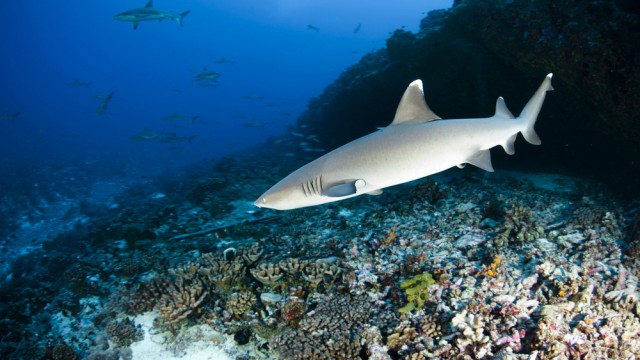I’ve always been obsessed with fish. Ever since I was a small child. My sister has always hated fish, and I’ve always been entranced. Wanting to first snorkel, and later dive, as many fishy spots as possible.
So I was more than excited, upon arriving in Toliara, to learn there were two excellent places to swim to the north and the south. There was debate about which was better: Ifaty or Anakao. So I decided I need to see both.
I headed south first, to a string of unspoilt Vezo fishing villages, interspersed with some of Madagascar’s most pristine white beaches, where the resorts are considered “less touristy than to the north” by tourism officials – although compared to popular beach resorts around much of the rest of the world, both appeared pretty isolated.
From Toliara I chartered a boat to the petite fishing villages along Anakao beach. Blessed with an entrancing semi-circle of white-sand beach entrance, a slice of turquoise water beyond and a fringe of emerald-green vegetation for dessert, it is a sight for sore eyes after the dust and sunny blaze and moderate chaos that is the town of Toliara.
Most of Anakao’s dive sites are around the nearby island of Nosy Ve, which is a former pirate haunt. This fact only added to its allure for me, although the offshore reef and the colourful fish and coral inhabiting it, were equally mesmerizing once I was submerged. I go with Safari Vezo, a local company that also organized my Toliara boat transfer, and am not disappointed in the experience. When we finish diving off Nosy Ve we head about 7 km south to Nosy Satrana, where more schools of bright, stripy and spotted fish in a rainbow of colours await in a sea that’s a swirl of jade and turquoise.
Beyond diving, the Anakao villages and the surrounding beaches have several very relaxed and well-run beach hotels spread along the sand fronting hundreds of brightly painted pirogues rocking gently by the breaking waves, including one run by the Safari Vezo, the operator I dove with. I liked its gregarious feel and restaurant with a maritime vibe – it’s draped in fishing nets and meals are served on tables with gingham-covered clothes; the menu focuses on seafood (obviously). The bungalows here are strung out along the beach and feature terraces fronting the sea and basic bucket showers (still a reality in much of Madagascar).
Another dining option on the beach is Chez Emile, which offers fabulous views of the dozens of the brightly painted fishing boats that pull into the “beach harbour” and is the best place to eat traditionally prepared seafood meals and down semi cold beers with the locals.
If you need a more upmarket hotel experience try Hotel La Reserve, which is a quick pirogue ride around the headland from Anakao. The beach here stretches uninterrupted and uninhabited for miles. La Reserve occupies a prime location, and is comfortable, well run and friendly. Guests dine together with the French proprietors in the evenings. The clean and updated wooden bungalows are perched on stilts, with solar power and stunning views. This is the beach, and the hotel, to head for surfing in the area. The staff can also organise 4WD trips along the coast, whale watching, and fishing tours.
After I’d had my fill of diving at Anakao (or at least as much as my wallet could afford), I returned to Toliara and charted a taxi to take me 22 km north along a potholed road to Ifaty. It is considered by serious divers to be the better of the two spots, especially for those interested in seeing sharks. Sharks have always fascinated more than scared me, so I couldn’t wait to get in the water here.
The collective name given to two dusty fishing villages – Ifaty/Mangily and Madio Rano — between which a series of beach bungalow hotels are strung, Ifaty is more visited than Anakao despite having a less appealing beach.
But the 35-meter-long coral reef running offshore along the coastline is why I visit. While some sections of the reef are dead or damaged, other sections are more unscathed and attract a wide variety of fish, including various species of shark. And there are more than half a dozen excellent dive spots in the area.
Upon arrival I check into Bamboo Club at the northern – more beautiful – end of Mangily beach. It is one of the best-known dive operators in Ifaty and also has decent accommodation in comfy bungalows on the beach. There’s a small swimming school and an excellent terrace restaurant where regional dishes are served.
To see sharks we head to an area called Northern Pass, where a break in the reef allows deep-water access. It’s an awesome experience, swimming with sharks, and one I will never forget. And although the sharks we see are not aggressive or dangerous, floating next to them makes me more aware of the power and might the larger members of their species have.

